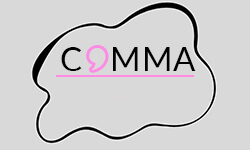
Many students struggle with using commas correctly in academic writing, especially when it comes to the conjunction “and”. This often leads to mistakes and confusion, which is caused by not understanding the rules and exceptions that apply to comma usage. To help clarify this issue, this article will explain when to use a comma after “and”, provide examples, and cover any exceptions to the rule.
When to place a comma after “and”
In general, there is no need for a comma after “and”. Even if “and” is used as an introduction to a sentence, a comma is not placed after it. A comma after “and” is only placed when it precedes a parenthetical phrase.
Comma
Parenthetical phrase
No comma
Introductory “and”
Various Style Guides may have different rules regarding the use of commas, and some complex sentences may have exceptions to the standard comma placement rules. It’s crucial to consider whether a comma is required to ensure that your sentence is clear and comprehensive.
Comma after “and”
When a parenthetical phrase is placed between “and” and the rest of the main clause, a comma is necessary directly after “and”. I.e., the parenthetical phrase is placed between commas right after “and.” However, that is the only case when a comma after “and” is placed.
Parenthetical phrase
A comma after “and” is necessary if a parenthetical phrase follows. The parenthetical phrase appears within the sentence and can provide additional information or clarification, but is not an essential part of the sentence. Therefore, a parenthetical phrase is separated by commas, to help clarify where it begins and ends.
All example sentences entail parenthetical phrases enclosed in commas and placed right after “and.”
No comma after “and”
No comma is placed after “and” if the word introduces a sentence. In general, a comma is never placed after this conjunction. The following illustrates examples of the word “and” introducing sentences without placing a comma subsequently.
Introductory “and”
If the word “and” introduces a sentence, a comma is generally not placed.
Note: In academic writing, starting a sentence with “and” is acceptable, but it should be used judiciously. Always consider the preferences of your audience or publication and avoid overuse to maintain clarity and impact.
Test yourself!
Practice sheet
To test your comprehension of using commas after “and”, try placing them in the appropriate positions in the 10 sentences. Afterward, check the second tab to verify if you have the correct understanding.
- John likes to play football and his sister enjoys tennis.
- The restaurant serves pizza, pasta, and salad and also offers vegan options.
- He loves reading poetry, novels, and occasionally comic books.
- The dog barked loudly and scared away the intruders.
- They covered all topics, such as timetable, budget, and to everyone’s surprise the new policy.
- We have a car, a bicycle, and a motorbike and we use each one for a different purpose.
- The film was both entertaining and educational and received positive reviews.
- The company implemented new policies and saw an increase in productivity.
- I visited my grandparents, uncles, and after a long journey my distant cousins.
- The students need to finish dusting, the dishes, and if there is time vacuum cleaning.
- John likes to play football and his sister enjoys tennis. (No comma)
- The restaurant serves pizza, pasta, and salad and, also, offers vegan options. (Comma)
- He loves reading poetry, novels, and, occasionally, comic books. (Comma)
- The dog barked loudly and scared away the intruders. (No comma)
- They covered all topics, such as timetable, budget, and, to everyone’s surprise, the new policy. (Comma)
- We have a car, a bicycle, and a motorbike, and we use each one for different purposes. (No comma)
- The film was both entertaining and educational and received positive reviews. (No comma)
- The company implemented new policies and saw an increase in productivity. (No comma)
- I visited my grandparents, uncles, and, after a long journey, my distant cousins. (Comma)
- The students need to finish dusting, the dishes, and, if there is time, vacuum cleaning. (Comma)
- ✓ 3D live preview of your individual configuration
- ✓ Free express delivery for every single purchase
- ✓ Top-notch bindings with customised embossing

FAQs
If “and” is connecting two independent clauses, a comma is generally needed before the conjunction. However, there are some exceptions to this rule, such as when the clauses are short and closely related. On the other hand, a comma is only placed after “and” when it precedes a parenthetical phrase.
It depends on the context of the sentence if a comma is placed after “and”. It is recommended to study the rules and examples of comma usage and practice using them in sentences to get a more profound understanding of when to use a comma after “and”.
Typically, a comma after “and” is only placed when a parenthetical phrase follows. Otherwise, a comma is not placed after “and”.
